Should I Upgrade My GeForce GTX 460 to a GeForce GTX 960 Video Card?
Temperature & Noise Testing
Temperatures are important to enthusiasts and gamers, so we took a bit of time and did some temperature testing on the GTX 460 and GTX 960 video cards. NVIDIA GeForce GTX 460 1GB Idle Temps: 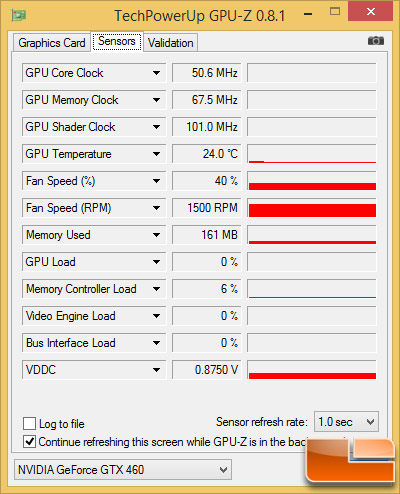 ASUS Strix GTX 960 Direct CU II OC 2GB Idle Temps:
ASUS Strix GTX 960 Direct CU II OC 2GB Idle Temps: 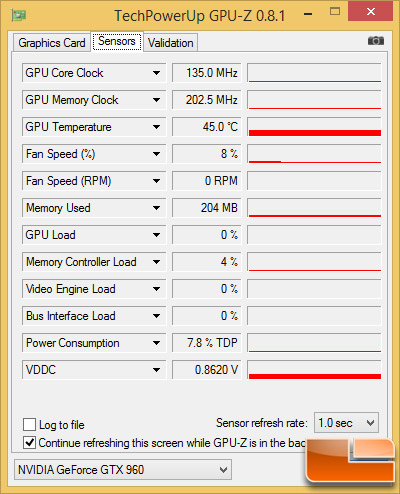 The ASUS Strix GTX 960 DirectCU II video card has no fans spinning at idle, so the card is dead silent and running at 45C. The NVIDIA GeForce GTX 460 1GB video card has a single fan that runs at all times and was found to be at 24C at idle. NVIDIA GeForce GTX 460 1GB Gaming Temps:
The ASUS Strix GTX 960 DirectCU II video card has no fans spinning at idle, so the card is dead silent and running at 45C. The NVIDIA GeForce GTX 460 1GB video card has a single fan that runs at all times and was found to be at 24C at idle. NVIDIA GeForce GTX 460 1GB Gaming Temps: 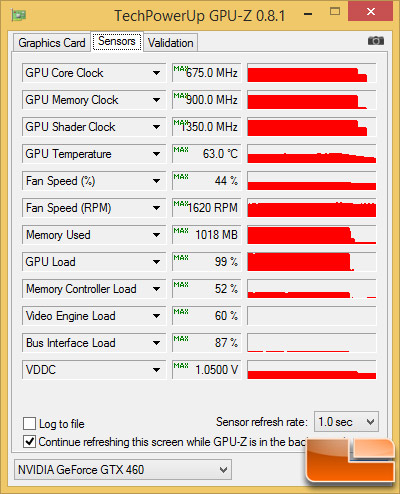 ASUS Strix GTX 960 Direct CU II OC 2GB Idle Temps:
ASUS Strix GTX 960 Direct CU II OC 2GB Idle Temps: 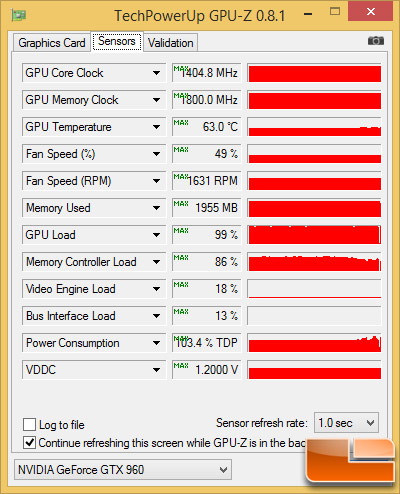 It may seem unbelievable, but both the NVIDIA GeForce GTX 460 1GB and the ASUS STRIX GTX 960 2GB video cards reached a maximum of 63C in a room where the temperature was 67F (20.5C)!
It may seem unbelievable, but both the NVIDIA GeForce GTX 460 1GB and the ASUS STRIX GTX 960 2GB video cards reached a maximum of 63C in a room where the temperature was 67F (20.5C)! 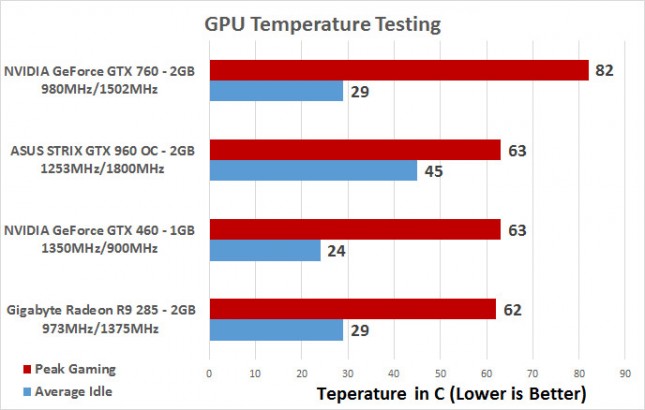
Sound Testing
We test noise levels with an Extech sound level meter that has 1.5dB accuracy that meets Type 2 standards. This meter ranges from 35dB to 90dB on the low measurement range, which is perfect for us as our test room usually averages around 36dB. We measure the sound level two inches above the corner of the motherboard with ‘A’ frequency weighting. The microphone wind cover is used to make sure no wind is blowing across the microphone, which would seriously throw off the data.
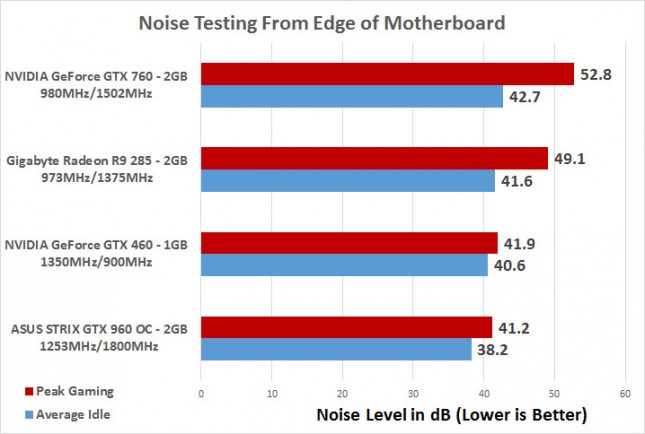 The ASUS STRIX GTX 960 DirectCU II OC 2GB video card has no fans running, so the card is dead silent at idle. The only reason the system is above ambient noise levels is due to water cooler fans and pump noise. Even with the fans running the ASUS STRIX GTX 960 hit just 41.2dB, so this is a very quiet card and that will appeal to many gamers. We didn’t notice any choke noise when gaming, but we did notice a little bit when we were loading up Far Cry 4. When the opening credits are showing the video card is putting out over 2,000 FPS according to FRAPS and you’ll hear the chokes a bit. Once the game starts and the GPU is loaded up normally there is no choke noise to be heard from the card on our open air test bench. Placing this card inside a case will only improve noise levels (granted it isn’t overheating), so the thermals and noise levels from this card are damn impressive. The NVIDIA GeForce GTX 460 is also a very quiet card that has a single fan that runs at 1500RPM at idle and then bumps up to just 1630RPM when gaming. Both cards are comparable when gaming, so there really isn’t a huge difference when it comes to gaming noise levels.
The ASUS STRIX GTX 960 DirectCU II OC 2GB video card has no fans running, so the card is dead silent at idle. The only reason the system is above ambient noise levels is due to water cooler fans and pump noise. Even with the fans running the ASUS STRIX GTX 960 hit just 41.2dB, so this is a very quiet card and that will appeal to many gamers. We didn’t notice any choke noise when gaming, but we did notice a little bit when we were loading up Far Cry 4. When the opening credits are showing the video card is putting out over 2,000 FPS according to FRAPS and you’ll hear the chokes a bit. Once the game starts and the GPU is loaded up normally there is no choke noise to be heard from the card on our open air test bench. Placing this card inside a case will only improve noise levels (granted it isn’t overheating), so the thermals and noise levels from this card are damn impressive. The NVIDIA GeForce GTX 460 is also a very quiet card that has a single fan that runs at 1500RPM at idle and then bumps up to just 1630RPM when gaming. Both cards are comparable when gaming, so there really isn’t a huge difference when it comes to gaming noise levels.
